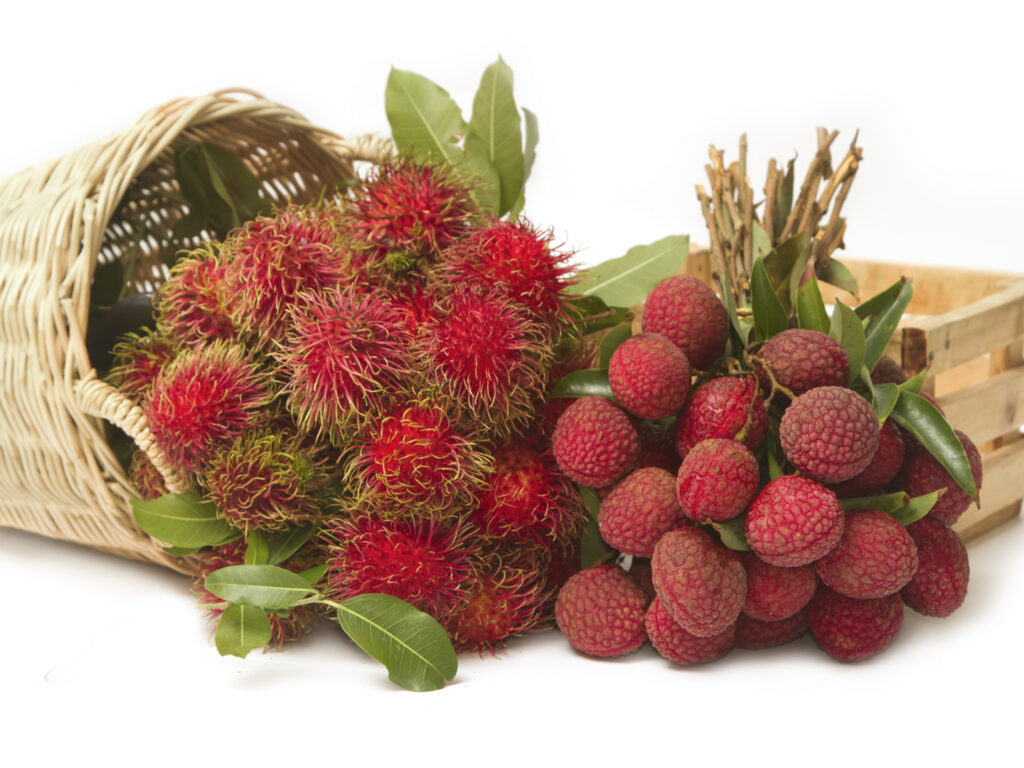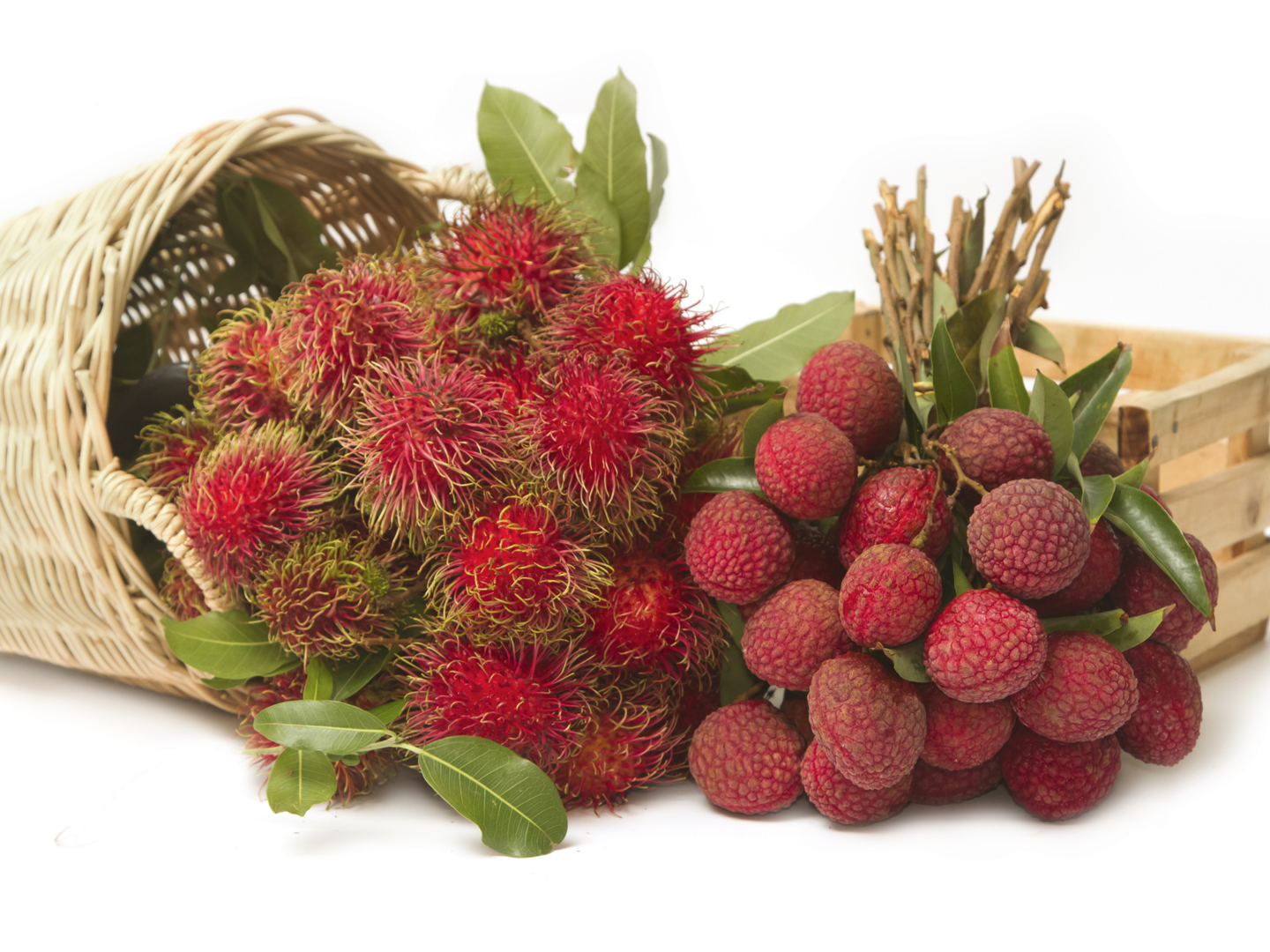
Lychees are tropical fruits native to the Guangdong and Fujian provinces of southeastern China, but they are now grown in many parts of Asia and beyond. Known scientifically as Litchi chinensis, lychees are part of the soapberry family, which also includes other fruits like rambutan and longan.
Description
Lychees are small, round to oval fruits about 1 to 2 inches in size. They have a rough, leathery skin that is pink-red when ripe and peels away easily to reveal the edible part of the fruit. The flesh of the lychee is translucent and white, with a texture similar to that of a grape but slightly firmer. At the center of each lychee is a single large, shiny brown seed.
Flavor and Culinary Uses
The flavor of lychees is uniquely sweet and fragrant, often described as a mix between a strawberry and a watermelon with slight floral notes. They are commonly eaten fresh as a snack or used in fruit salads, desserts, and cocktails. Lychees can also be found canned in syrup, which makes them available year-round in some places.
Nutritional Benefits
Lychees are rich in nutrients, offering a good source of vitamin C, vitamin B6, niacin, riboflavin, folate, copper, potassium, phosphorus, magnesium, and antioxidants. They are low in calories, making them a healthy, sweet treat.
Availability
Lychee season is relatively short, typically from late spring through early summer. Fresh lychees are usually available during this time in areas where they are grown, while canned lychees can be found in supermarkets worldwide.
Lychees are not only enjoyed for their delightful taste but also for their health benefits, including boosting the immune system, improving digestion, and contributing to skin health due to their antioxidant properties. However, due to their high sugar content, they should be consumed in moderation.




